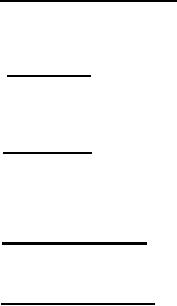 |
|||
|
|
|||
| ||||||||||
|
|  MIL-D-81347C(AS)
Special Support Equipment - Self-test features shall be such as
3.3.13
to obviate the need for any Special Support Equipment for preflight, post-flight checks of fault isolation.
There shall be no special support equipment for support of the equipment except as expressly autho-
rized by the government.
Adjustments - In order to decrease the complexity of the mainte-
3.3.14
nance tasks, the equipment should be designed to require no periodic adjustments, alignment or cali-
bration. If adjustments are mandatory, they shall be capable of being made in the aircraft using simple
tools and/or General and Standard Test Equipment.
P e r f o r m a n c e - Unless otherwise specified, values set forth to
3.4
establish the requirements for satisfactory performance apply to performance under both standard
and extreme service conditions. When reduced performance under the extreme conditions is accept-
able, tolerances or values setting forth acceptable variations from the performance under standard
conditions will be specified herein.
Description of System - The DPS shall be comprised of one each
3.4.1
of Logic Units 1, 2, 3 and 4, three Universal Keysets, one Pilot's Keyset, one Armament/Ordnance
Test Panel and one Ordnance Panel. (Refer to 1.3 regarding Magnetic Tape Transport.)
Computer Input/Output - The subunits, which are assigned to a
3.4. 1.1
Computer Input and/or Output Channel will communicate with the computer in a 30 bit (max) parallel
mode over the Input and/or Output Channel. The Input/Output Unit of the computer shall provide
computer control of and communications with peripheral equipment. Up to 16 channels of input and
16 channels of output shall be provided in the Input/Output Unit. Each channel shall provide parallel
data transfer for up to 30 data bits. Each group of four input channels and the corresponding group of
four output channels shall have access to an assigned 32,768 word memory group, with selectability
to other 32,768 word groups of a maximum 131,072 word memory by back panel wire change. In the
delivered configuration, the four output data channels from each of the four output registers shall be
bussed into one 30-twisted-pair cable. Each of these output groups shall be provided with control
lines for four peripherals. Thus the output configuration will provide four data output channels from
the 1/0 unit with control lines for a total of 16 peripherals.
Each of the computer I/O unit I/O groups contains a time-
shared output register, input selection circuits, local I/O control and priority circuits.
Since the Output Register in an 1/0 group is time-shared by up
-
to four Output peripherals, the 30 data lines emanating from the register are common to the four
output peripherals, i. e. , an I/O group transmits the data to the four output peripherals over a single
30-twisted-pair cable and the control lines for the four Output peripherals determine which peripheral
is to sample the data. The control lines for the four channels are independent. Subunits which com-
municate with the same I/O group have been assigned to the same logic unit. This permits a logic
unit to buffer all incoming computer data with a single group of 30 input amplifiers. (Input amplifiers
are defined in Appendix 11.)
Logic Units 2, 3, and 4 each require three computer output
channels. Logic Unit 1 contains two subunits which are assigned a computer output channel. As indi-
cated, a computer 1/0 group is capable of servicing up to four output peripherals, and since none of
the logic units require more than three output channels, each logic unit shall make the 30 data lines
from the computer 1/0 subunit available for "bussing" to one additional output peripheral. The data
lines from the computer shall remain available for "bussing" regardless of the number of subunits re-
moved from the logic unit.
3.4.1.1,1
A failure in Logic Unit 4 electronics shall not preclude normal
operation of computer charnels O through 11 used in the aircraft with Logic Units 1, 2, and 3.
11
|
|
Privacy Statement - Press Release - Copyright Information. - Contact Us |